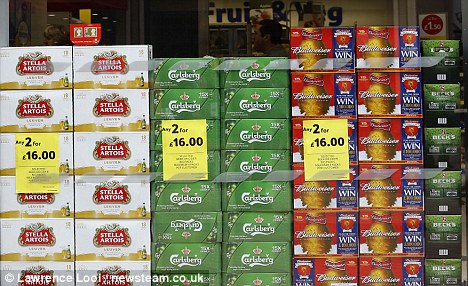As I began my beer-writing career with bottle reviews, some of the earliest features I was asked to write were on the subject of the bottled beer trade in general. For the sake of completeness, I’m reproducing this short piece written for Fuller’s Fine Ale Newsletter in 2007. Not much has changed on the supermarket side, and if Real Ale in a Bottle as a category really is a “sleeping giant”, it’s still snoring loudly. But I was prescient in noticing the diversifying routes to market for microbrewed beers. The one outlet that didn’t seem so much of a factor back then was the taproom and brewery shop, which for many new breweries has since proved a vital way of cutting out the middleman.
Back in the 1970s, buying beer to drink at home meant going to a closeted-off corner of the local pub and choosing between the owning brewery’s light, pale and brown ales in thick half-pint deposit bottles. If you were lucky you might also be offered similarly packaged specimens of Mackeson, Guinness and White Shield, plus Gold Label rationed by the third-pint “nip”.
80% of beer sales back then were on-sales, and the consumption of alcohol outside the confines of a pub still carried a social stigma. While it was fine to pick up a stout or barley wine for Granny who didn’t get out much, or head off to a social gathering armed with that retro style icon, the Party Seven, anything else might be viewed as problem drinking.
The intervening decades have seen a huge change in attitudes and consumption patterns. Against a trend of overall decline in beer sales in the UK, off-trade sales now stand at 40% and rising. But the dingy off-license entrances are no more, and the recent news that Scottish Courage [update: now part of Heineken] are withdrawing Newcastle Brown in old-style deposit bottles demonstrates the insignificance of the pub when it comes to carry-out.
Instead, the growth is mainly down to the big supermarkets with their price cutting and marketing clout. And while discount slabs of bland lager make up the bulk of their volume, the supermarkets have also played a major role in flattering the beer drinker as a connoisseur, much as they previously drove the democratisation of wine appreciation and helped make boozing at home respectable. Specialist beer ranges sit alongside organic, “finest” and locally sourced products in their appeal to the more discerning shopper with money to spend on expensive – and profitable – items elsewhere in the store.
Still, supermarket beer has its limits. Listings are often achieved through the ability to offer deep discounts so the same brands crop up again and again. And beer still isn’t accorded the same respect as wine. My local superstore is currently offering around 50 lines under the heading “premium lager” – of which almost half turn out to be not lagers at all, but wheat beers and imported ales. I can’t imagine them similarly shelving cava and Californian bubbly as “Champagne”.
Alongside the multiples is a much smaller but increasingly healthy niche market catering to the true connoisseur, including specialist beer shops, online traders, farmers’ markets and breweries offering direct sales. Independent retailers face massive pressure from supermarkets on price, but some have survived by providing things the multiples can’t, like rare imports, small runs from tiny micros and individual expert advice and enthusiasm.
One big growth area is in imported specialities – the internationalism of today’s scene is a far cry from the seventies when even the beers with foreign names were brewed in Britain. The second is in British bottled ales, including bottle conditioned beers, or Real Ale in a Bottle (RAIB). In 1998, CAMRA published the first edition of its Good Bottled Beer Guide which listed 180 RAIBs; the current edition lists almost 800.
A handful of bottle conditioned ales have struggled with prejudice against sediment in bottles and quality control issues to become fixtures on supermarket shelves, and more than one supermarket buyer has told me RAIB is a “sleeping giant” that could become a big consumer draw with the right marketing. Meanwhile, the smaller brewers are finding more direct routes to the consumer, including mail order, farmers’ markets and local retailers.
The shift to home consumption is a big challenge for the on-trade, but it’s also brought new opportunities and stimulated innovation. And while there will always be something special about enjoying a local draught beer within spitting distance of its brewery, I doubt many of us would be prepared to give up the choice between, say, a Scottish organic bottle conditioned porter, a Belgian Trappist and a Californian IPA, for a return to the days of pale, light, brown and a tanner on the bottle.






Leave a Reply